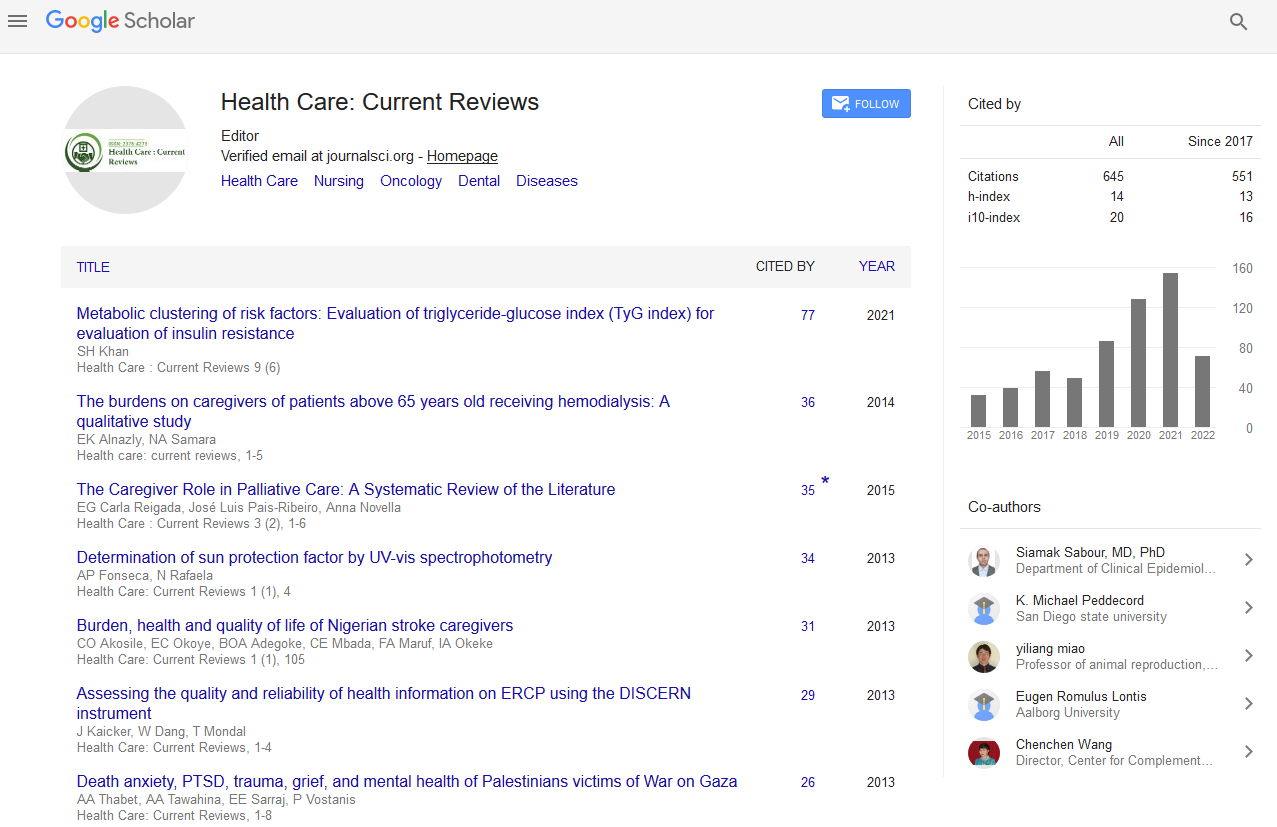PMC/PubMed Indexed Articles
Indexed In
- Open J Gate
- Academic Keys
- RefSeek
- Hamdard University
- EBSCO A-Z
- Publons
- Geneva Foundation for Medical Education and Research
- Google Scholar
Useful Links
Share This Page
Journal Flyer

Open Access Journals
- Agri and Aquaculture
- Biochemistry
- Bioinformatics & Systems Biology
- Business & Management
- Chemistry
- Clinical Sciences
- Engineering
- Food & Nutrition
- General Science
- Genetics & Molecular Biology
- Immunology & Microbiology
- Medical Sciences
- Neuroscience & Psychology
- Nursing & Health Care
- Pharmaceutical Sciences
Strengthening auxiliary nurse midwife services for women and children in India through an innovative approach
Joint Event on 3rd International Conference on Medical Sciences, Hypertension and Healthcare and World Congress on Organ Transplantation and Artificial Organs
August 24-25, 2018 Tokyo, Japan
Pushpanjali Swain
National Institute of Health and Family Welfare New Delhi, India
Scientific Tracks Abstracts: Health Care Current Reviews
Abstract:
The objective of the study is to highlight the major contribution made by Auxiliary Nurse Midwife (ANM) to achieve the national targets of IMR, MMR and TFR through an innovative approach called mother and child tracking system in India and critically reviewed the achievements and shortcomings. India is a vast country with population of 125 crores having a large workforce about 2 lakhs of ANMs to take care of its women in the reproductive age group and children up to five years of age. ANM has been pillar to the India???s public health system to provide basic medical care to huge rural population in an extensive network of PHCs and health sub centres. It has been a concern of Government of India to reduce maternal deaths, infant and child mortality in the country. Also, India being signatory to MDGs and SDGs, various intervention strategy has been adopted like Nation Rural Health Mission in 2005. Under the mission large group of activists were identified and created at village level of 1000 population named ASHA to assist and support to ANMs. ANMs got the helping hand in terms of identifying pregnant women and infant and children in the village. For better planning and monitoring of the program an innovation project was launched in 2009 to track and plan for pregnant mothers and children through a web-based Mother and Child Tracking System (MCTS) to speed up the reduction of deaths of pregnant mothers and child deaths in the country. The study is descriptive in nature and used secondary data sources i.e. HMIS, rural health statistics, national health profile, sample registration system and national family health survey, etc. The data was analyzed for the period after implementation of MCTS and prior to the period of no MCTS to compare the speed of reduction of IMR and MMR. Studies show that awareness level of women in rural areas is low to avail services during pregnancy. MCTS is very much ANM centric. ANMs register all pregnant women and children below 5 years through MCTS and receive registration numbers. ANM gets the work plan weekly within her catchment areas so that she would know who are due for ANCs, delivery, post-natal care and immunization services. Once the due services given to pregnant mothers and children, the update of information was done in the portal. This process helped ANMs to update service. Analysis shows that there is an improvement of coverage of ANC, institutional delivery and immunization to infants and identification and addressing the prenatal and postnatal complications through the tracking system. Since the portal is internet based, in hilly and far flanged areas, services are not updated regularly due to power failure and slow network connectivity. Also, sub-center is not well equipped with internet and computer facilities so to update the services. She must go to block level to enter the data, there is a time lag between services and update so real time monitoring and tracking sometimes not possible. It shows that there has been significant reduction of IMR and MMR in the country during the period MCTS. Because ANM has been reminded about the quantum of job to perform every week and monitored by higher authority through the portal. Also, TFR is also declining and reached replacement level of fertility in most parts of the country except a few states.
Biography :
Pushpanjali Swain is currently a Professor and Head of the Department of Statistics and Demography, National Institute of Health and Family Welfare, New Delhi, India. She was a WHO Fellow of Biostatistics and Epidemiology in 2007. She has contributed 25 research papers which were published in different journals at national and international level. She had monitored various large-scale surveys like District Level Household Surveys (DLHS) and Coverage Evaluation Survey (CES) of UNICEF of the country as a nodal person, monitoring of Annual Sentinel Surveillance for HIV Infection in India and coordinated the Integrated Behavioral and Biological Surveillance (IBBS) in the states of Rajasthan and Delhi in India.
E-mail: drpswain@yahoo.co.in


